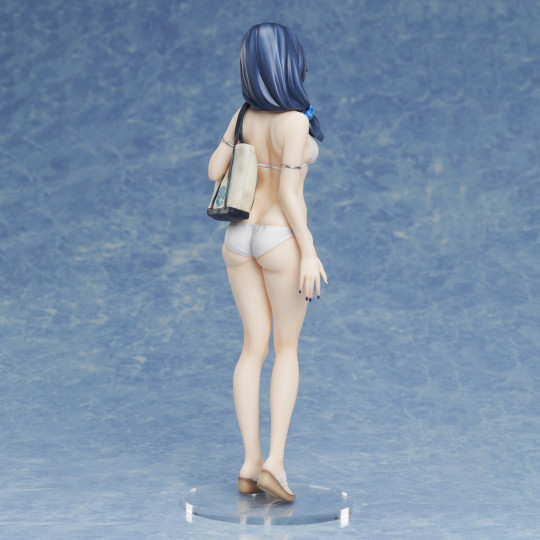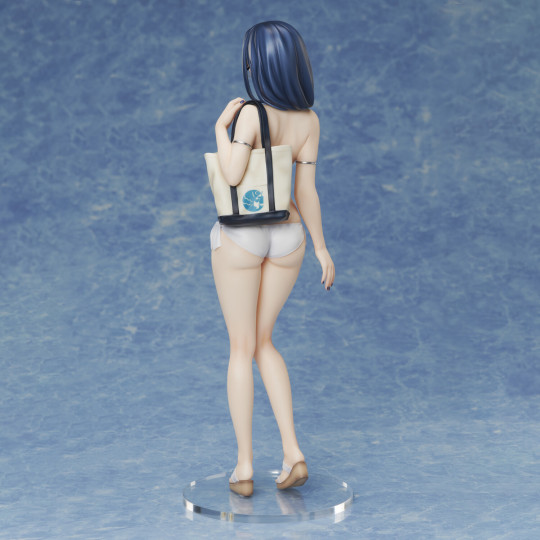#92m
Explore tagged Tumblr posts
Text

92M👓(月)東ワ-46b on X: "バニーされた母、サナコさん🧡🐰🧡 https://t.co/xwmFcJAx0n" / X
1K notes
·
View notes
Text

✨ | 92M👓
92 notes
·
View notes
Text

brushing wild shark
16 notes
·
View notes
Text

7 notes
·
View notes
Text
From the article:
Above the whirring of 300,000 cars each day on Los Angeles’s 101 freeway, an ambitious project is taking shape. The Wallis Annenberg wildlife crossing is the largest wildlife bridge in the world at 210ft long and 174ft wide, and this week it’s had help taking shape: soil. “This is the soul of the project,” says Beth Pratt, the regional executive director, California, at the National Wildlife Federation, who has worked on making the crossing become a reality over the last 13 years. She says she’s seen many milestones, like the 26m pounds of concrete poured to create the structure, but this one is special. “To be able to put my hand in that soil and toss it on and know that we’ll be putting milkweed plants that will flourish for monarch butterflies, or picturing the first mountain lion paw print on that soil,” she says, fills her with hope. “It is wonderful to watch this habitat take shape.” The plot is a native wildlife habitat that connects two parts of the Santa Monica mountain range, with the hopes of saving creatures – from the famous local mountain lions, down to frogs and insects – from being crushed by cars on one of the nation’s busiest roadways. With nearly an acre of local plants on either side and thick vegetated sound walls 12ft high to dampen light and noise for nocturnal animals as they slip across, it’s an unprecedented feat of engineering. Imagination, too. The project began in 2022 through a public-private partnership that brought together many organizations to cover the $92m in costs, according to Caltrans, the state transportation department. Research shows that wildlife crossings save money because it limits animal interactions with vehicles.
#wildlife crossing#habitat conservation#habitat protection#wildlife#good news#hope#hopepunk#solarpunk#environment#biodiversity#endangered species#habitat fragmentation#road strike#habitat#optimism#ecology
864 notes
·
View notes
Text
Thinking about Lisa being willing to drop $92M on mercenaries on relatively short notice to bust Taylor out of jail. And then when Sabah needs, idk, probably in the vicinity of $5M, Lisa strings her along for four and half years. She really took Coil's schtick and ran with it
103 notes
·
View notes
Photo

(#ブルーアーカイブ WKM - 92Mのイラスト - pixivから)
500 notes
·
View notes
Text

92M👓 on X: "🤍🐰🤍 https://t.co/KBmwWmxmRI" / X
562 notes
·
View notes
Text

Yanagi💙🖤💛 | 92M👓
113 notes
·
View notes
Text

ELL🦈 by 92M
550 notes
·
View notes
Text






Date-chan : Swimsuit ver [Kinshi no Ane] non scale from Union Creative coming January 2024.
24 notes
·
View notes
Text

our starting cats! get used to them, you’ll be seeing them a lot :>
individual drawings + extra under the cut

SILVERSTAR
she/her, cis shecat, 46m
- lonesome, natural leader, religious, erratic
- stubborn and hard-headed, she’ll never back down from a fight, often to her own detriment.

HAILCHEST
he/they/she, nonbinary tomcat, 76m
- arrogant, ambitious, perceptive. incredibly intelligent, always seems to be calculating something behind her eyes.
- a clever, trusted advisor to silverstar. thinks he’s better than others because they’re smart.

STEMTUFT
she/her, cis shecat, 111 moons
- cautious with a sharp eye for justice. can come off as cruel or bitter, she just has a hard time getting her words right.
- as a skilled healer, she cares deeply for her patients and her friends. tired most of the time.

STONESHADE
she/her, trans shecat, 99 moons
- vengeful, with an excellent memory, she never forgets a grudge. an eloquent speaker with a silver tongue, stoneshade can talk her way out of anything.
- very compassionate with motherly instincts. she has a tendency to take in stray kits and nurse them back to health (two of which being silverstar and murkwhistle, the rest of her kits left in adulthood, it seems the other two are just momma’s girls)

NETTLEBURN
he/him, cis tomcat, 86m
- an unusually strong fighter, but extremely nervous. he would be a formidable opponent otherwise.
- he is, however, an incredible teacher. he’s quite fond of murkwhistle, his former apprentice.

STORM (the gray one)
he/they, trans tomcat, 92m
- skilled storyteller with a dramatic flair who knows all the tales of old. secretly insecure, but hides it with aloof confidence.
- pair bonded with mask. do not separate.
MASK
she/they, cis shecat, 55 moons
- truly confident in herself, she knows that she knows what she’s doing. seems to know things others don’t, they’re quick to leave any situation that feels off to them.
- quiet, stoic, tends to keep to herself.

MURKWHISTLE
she/her, cis shecat, 24 moons
- compassionate and full of light, usually passed off as being naive, though she’s really not, she’s just had a good life.
- very strong with huge paws for her size and muscles that ripple under her pelt.

???
- we’re not so sure who this is, yet
#clangen#clangen comic#warrior cats#wc#ooc#warrior cats clangen#clangen blog#rayclan#warriors oc#clangen oc#silverstar#hailchest#stemtuft#stoneshade#nettleburn#murkwhistle#mask#storm#starclan
48 notes
·
View notes
Text

2 notes
·
View notes
Text
I hate it when I'm talking to someone in a social situation, usually a semi-stranger, and they bring up something that is not quite political, but makes clear exactly where their politics are. I think I'm a pretty well-informed person. I read a lot of news from decently reliable sources (though I also bring a healthy skepticism to that too). But whenever I'm in this situation, I can never remember for the life of me where I read a thing or how I know it.
A good example of this is that they are building a wildlife bridge in the west valley to try to help mountain lions and other animals safely cross the 101 freeway which has been historically very deadly to them. The cost of the project is currently at $92m, but the vast majority of the funding is from non-profit fundraising and major grants. It's not a traditional Caltrans project.
Recently several people have complained to me about this project without knowing that it's primarily not tax-payer funded. When I tell them, they don't seem to believe me. And then they also make a snide comment like, "I don't know how the mountain lions are going to know they're supposed to use the bridge."
And like... I don't know either ma'am, but I'm not a scientist or wildlife expert. I'd like to think that if they're willing to fund raise nearly $100 million for something, that they have some idea beyond just a wing-and-a-prayer that it will work. BUT ALSO if you're skeptical about something LOOK IT UP.
I feel like people sometimes just want to complain without actually knowing anything. They think something is common sense when it's absolutely not common sense. And I hate that I can't cite my sources in the moment even though I know that I know. And I particularly hate this when their exact political bias is so fucking obvious. Like if we can't even talk about something that is not highly politicized, how are we going to talk about the much harder things that matter?
#anyhow i'm sorry you read this whole thing#i'm kinda sick of people right now#i have no idea where i read that#but i read the lat laist nyt and vox#maybe just pick one of those#and google it
60 notes
·
View notes
Text
Every week, Bastián Barria ventures into the Atacama desert in northern Chile looking for items of discarded clothing in the sand. About half of the hundreds of garments he finds are in perfect condition. He collects what he can and adds them to the two-tonne pile of clothes he has stored at a friend’s house.
On 17 March, 300 of those items, including Nike and Adidas shorts, Calvin Klein jeans and a leather skirt, were listed for sale online for the first time. The price? Zero. Customers had only to pay shipping costs. The first batch sold out in five hours, bought by customers from countries including Brazil, China, France, the US and the UK.
Re-commerce Atacama is part of a campaign to raise awareness of the mountains of discarded clothes in Chile and of textile waste globally. It was set up after a fashion show staged in the desert last year, where models walked a catwalk of sand wearing outfits made out of the surrounding waste.
“We want people to feel involved and be agents of change – not from a passive position of seeing content, but by purchasing something, showing people and telling our story of what is happening here in the desert,” says Barria, 32, a civil engineer and co-founder of Desierto Vestido (Dressed Desert), an organisation dedicated to raising awareness of textile waste.
“At first, there was a certain disbelief on my part to see this happening. I asked myself why garments in perfect condition were being discarded in the desert when there are many people who might like to wear them. It’s sad. It really makes you feel powerless.”
Chile has long been a destination for secondhand and unsold clothing, most of it made in China or Bangladesh and passing through Europe, Asia or the US before arriving in the country. In 2022, more than 131,000 tonnes of clothing arrived in the country, most of it in the city of Iquique in northern Chile, home to one of the most important duty-free ports in South America.
Some is resold, but sources in the region say up to 70% ends up in rubbish dumps in the desert every year; in Chile it is forbidden to dump textile waste in legal landfills because it generates soil instability. The desert is one of the country’s most popular tourism destinations, known for its otherworldly landscapes, but for those living near the dump sites it has become a place of devastation. Pictures of a mountain of clothes taken from space went viral in 2023. In recent years, people have resorted to burning the waste in an attempt to hide the extent of it. The resulting toxic clouds of smoke are an environmental and health concern for the surrounding communities.
Determined to do something about the crisis, Barria’s organisation teamed up with fashion activists Fashion Revolution Brazil, the Brazilian advertising agency Artplan and the e-commerce platform Vtex, to tell the world about the situation.
The Re-commerce Atacama operation involves a careful process of selecting and restoring the garments to ensure they are in good condition for resale. They are cleaned and made available for free, bar shipping costs, on the digital platform.
In advance of the first drop of clothes, influencers and personalities including Dudu Bertholini, a judge on Drag Race Brasil, posted about the campaign on social media. The next drop is expected in April. Anyone interested can add their email to be notified when more clothes become available.
Fernanda Simon, director of Fashion Revolution Brazil, sees the project as “an act of activism that reveals what is behind fashion and proves we can do things differently”.
She says: “More than removing clothes from the desert, we wanted to inspire solutions, rethink the fashion model and show that we must talk about circularity.”
About 92m tonnes of textile waste are created annually and every second, the equivalent of a lorry load of clothes ends up on a landfill site somewhere around the world.
This phenomenon is a consequence of an increase in clothing consumption and the fast-paced production model of the fashion industry, says Simon. “How we produce fashion is wrong,” she says. “We produce more and more and the velocity of production is getting faster and faster. There is no transparency about how these clothes are made.”
While 20 years ago, most labels would release four collections of clothes annually, she says, now with the rise of fast fashion and ultra-fast fashion, there can be as many as 52 collections a year.
Unsold inventory and unwanted secondhand clothes, most of which come from markets in the US, Europe and Asia, are dumped in countries in the global south. Another place where this problem is particularly visible is Accra, Ghana’s capital, where tangled webs of clothes line the shore.
Simon labels this practice “racist and colonialist”. Most of the raw materials required to make clothes come from countries in the global south, she says. European countries and the US are the biggest consumers, and when they don’t want the clothes, they end up back in countries in the global south.
“It’s a massive problem. It’s not just Chile, it’s not just Ghana. It’s a global problem. We are facing this waste and it is proof that we need to rethink the fashion system.”
11 notes
·
View notes
